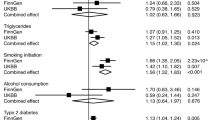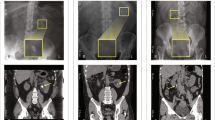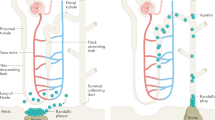Abstract
Cholelithiasis is one of the most prevalent and most expensive gastroenterologic diseases. It belongs to the group of complex metabolic disorders that affect humans, and its critical pathogenic mechanisms are not well defined. As a result, primary or secondary prevention strategies are sparse, and the only effective treatment is cholecystectomy. Here we provide an update on the molecular pathogenesis of gallbladder stones, evidence supporting the hypothesis that genetic factors are key elements predisposing to gallstones, and progress in human genetic studies of cholesterol stones. Data from recent identical twin, family and linkage studies provide conclusive evidence for a strong genetic component to gallstone disease. Furthermore, epidemiologic studies in at-risk populations indicate that gallstone formation is caused by multiple environmental influences and common genetic factors and their interactions. By contrast, monogenic subtypes of cholelithiasis, such as ATP-binding-cassette transporter deficiencies, appear to be rare. The summary of human association studies illustrates that distinct common gene variants might contribute to gallstone formation in different ethnic groups. The characterization of lithogenic genes in knockout and transgenic mice and the identification of many gallstone-susceptibility loci in inbred mice provide the basis for studies of the corresponding genes in patients with gallstones. The transfer of findings from mouse genetics to the bedside might lead to new strategies for individual risk assessment and reveal novel molecular targets for prevention and medical therapies.
This is a preview of subscription content, access via your institution
Access options
Subscribe to this journal
Receive 12 print issues and online access
$209.00 per year
only $17.42 per issue
Buy this article
- Purchase on Springer Link
- Instant access to full article PDF
Prices may be subject to local taxes which are calculated during checkout

Similar content being viewed by others
References
Kratzer W et al. (1999) Prevalence of gallstones in sonographic surveys worldwide. J Clin Ultrasound 27: 1–7
Paigen B and Carey MC (2002) Gallstones. In The genetic basis of common diseases (eds King RA et al.) 298–335 London: Oxford University Press
Ransohoff DF et al. (1983) Prophylactic cholecystectomy or expectant management for silent gallstones. A decision analysis to assess survival. Ann Intern Med 99: 199–204
Liver Disease Subcommittee of the Digestive Disease Interagency Coordinating Committee (2005) Action plan for liver disease research, 145–150. Bethesda: NIH
BQS Bundesgeschäftsstelle Qualitätssicherung (2004) Qualität sichtbar machen. BQS-Qualitätsbericht 2003, 31–39. Düsseldorf: BQS
Sandler RS et al. (2002) The burden of selected digestive diseases in the United States. Gastroenterology 122: 1500–1511
The Southern Surgeons Club (1991) A prospective analysis of 1518 laparoscopic cholecystectomies. N Engl J Med 324: 1073–1078
Carey MC and LaMont JT (1992) Cholesterol gallstone formation. 1. Physical-chemistry of bile and biliary lipid secretion. Prog Liver Dis 10: 136–163
Lammert F et al. (2001) Chromosomal organization of candidate genes involved in cholesterol gallstone formation: a murine gallstone map. Gastroenterology 120: 221–238
Rosmorduc O et al. (2003) ABCB4 gene mutation-associated cholelithiasis in adults. Gastroenterology 125: 452–459
Lammert F et al. (2004) Spontaneous cholecysto- and hepatolithiasis in Mdr2−/− mice: a model for low phospholipid-associated cholelithiasis. Hepatology 39: 117–128
Wittenburg H et al. (2003) FXR and ABCG5/ABCG8 as determinants of cholesterol gallstone formation from quantitative trait locus mapping in mice. Gastroenterology 125: 868–881
Paumgartner G and Sauerbruch T (1991) Gallstones: pathogenesis. Lancet 338: 1117–1121
Wang DQ et al. (2005) High cholesterol absorption efficiency and rapid biliary secretion of chylomicron remnant cholesterol enhance cholelithogenesis in gallstone-susceptible mice. Biochim Biophys Acta 1733: 90–99
Moschetta A et al. (2004) Prevention of cholesterol gallstone diseases by FXR agonists in a mouse model. Nat Med 10: 1352–1358
Buhman KK et al. (2000) Resistance to diet-induced hypercholesterolemia and gallstone formation in ACAT2-deficient mice. Nat Med 6: 1341–1347
Wang DQ et al. (2004) Targeted disruption of the murine cholecystokinin-1 receptor promotes intestinal cholesterol absorption and susceptibility to cholesterol cholelithiasis. J Clin Invest 114: 521–528
van Erpecum KJ et al. (2001) Phenotypic characterization of Lith genes that determine susceptibility to cholesterol cholelithiasis in inbred mice: soluble pronucleating proteins in gallbladder and hepatic biles. J Hepatol 35: 444–451
Wang HH et al. (2004) Targeted disruption of the murine mucin gene 1 decreases susceptibility to cholesterol gallstone formation. J Lipid Res 45: 438–447
Maurer KJ et al. (2005) Identification of cholelithogenic Helicobacter species and their role on murine cholesterol gallstone formation. Gastroenterology 128: 1023–1033
Vitek L and Carey MC (2003) Enterohepatic cycling of bilirubin as a cause of 'black' pigment gallstones in adult life. Eur J Clin Invest 33: 799–810
Brink MA et al. (1999) Enterohepatic cycling of bilirubin: a putative mechanism for pigment gallstone formation in ileal Crohn's disease. Gastroenterology 116: 1420–1427
Katsika D et al. (2005) Genetic and environmental influences on symptomatic gallstone disease: a Swedish study of 43,141 twin pairs. Hepatology 41: 1138–1143
Kesäniemi YA et al. (1989) Biliary lipid composition in monozygotic and dizygotic pairs of twins. Gut 30: 1750–1756
Körner G (1937) Über die familiäre Häufung der Gallenblasenkrankheiten. Zeitschrift der menschlichen Vererbungs- und Konstitutionslehre 20: 526–582
van der Linden W (1973) Genetic factors in gallstone disease. Clin Gastroenterol 2: 603–614
Duggirala R et al. (1999) Genetic determinants of variation in gallbladder disease in the Mexican-American population. Genet Epidemiol 16: 191–204
Nakeeb A et al. (2002) Gallstones: genetics versus environment. Ann Surg 235: 842–849
Tsai CJ et al. (2005) Glycemic load, glycemic index, and carbohydrate intake in relation to risk of cholecystectomy in women. Gastroenterology 129: 105–112
Leitzmann F et al. (1999) Recreational physical activity and the risk of cholecystectomy in women. N Engl J Med 341: 777–784
Kern F (1994) Effects of dietary cholesterol on cholesterol and bile acid homeostasis in patients with cholesterol gallstones. J Clin Invest 93: 1186–1194
Lammert F and Wang DQ (2005) New insights into the genetic regulation of intestinal cholesterol absorption. Gastroenterology 129: 718–734
Everhart JE et al. (2002) Prevalence of gallbladder disease in American Indian populations: findings from the Strong Heart Study. Hepatology 35: 1507–1512
Carey MC and Paigen B (2002) Epidemiology of the American Indians' burden and its likely genetic origins. Hepatology 36: 781–791
Everhart JE et al. (1999) Prevalence and ethnic differences in gallbladder disease in the United States. Gastroenterology 117: 632–639
Méndez-Sánchez N et al. (2004) The Amerindian's genes in the Mexican population are associated with development of gallstone disease. Am J Gastroenterol 99: 2166–2170
Miquel JF et al. (1998) Genetic epidemiology of cholesterol cholelithiasis among Chilean Hispanics, Amerindians, and Maoris. Gastroenterology 115: 937–946
Galman C et al. (2004) Bile acid synthesis is increased in Chilean Hispanics with gallstones and in gallstone high-risk Mapuche Indians. Gastroenterology 126: 741–748
Fracchia M et al. (2001) Biliary lipid composition in cholesterol microlithiasis. Gut 48: 702–706
van Mil SW et al. (2004) Benign recurrent intrahepatic cholestasis type 2 is caused by mutations in ABCB11. Gastroenterology 127: 379–384
Pullinger CR et al. (2002) Human cholesterol 7α-hydroxylase (CYP7A1) deficiency has a hypercholesterolemic phenotype. J Clin Invest 110: 109–117
Jiang ZY et al. (2004) Polymorphisms at cholesterol-7-α-hydroxylase, apolipoproteins B and E and low density lipoprotein receptor genes in patients with gallbladder stone disease. World J Gastroenterol 10: 1508–1512
Miyake JH et al. (2002) Transgenic expression of cholesterol 7α-hydroxylase prevents atherosclerosis in C57BL/6J mice. Arterioscler Thromb Vasc Biol 22: 121–126
Schneider H et al. (1997) In vitro effects of cholecystokinin fragments on human gallbladders. Evidence for an altered CCK-receptor structure in a subgroup of patients with gallstones. J Hepatol 26: 1063–1068
Miller LJ et al. (1995) Abnormal processing of the human cholecystokinin receptor gene in association with gallstones and obesity. Gastroenterology 109: 1375–1380
Miyasaka K et al. (2002) Association of cholecystokinin A receptor gene polymorphism with cholelithiasis and the molecular mechanisms of this polymorphism. J Gastroenterol 37: 102–106
Nardone G et al. (1995) The integrity of the cholecystokinin receptor gene in gallbladder disease and obesity. Hepatology 22: 1751–1753
Broderick AL et al. (2004) Cystic fibrosis transmembrane conductance regulator gene mutations cause “black” pigment gallstone formation: new insights from mouse models and implications for therapeutic interventions in cystic fibrosis. In Gallstone pathogenesis and treatment (eds Adler G et al.) 24–27 Lancaster: Kluwer Academic Publishers
Lyons MA et al. (2005) Single and interacting QTLs for cholesterol gallstones revealed in an intercross between mouse strains NZB and SM. Mamm Genome 16: 152–163
Pletcher MT et al. (2004) Use of a dense single nucleotide polymorphism map for in silico mapping in the mouse. PLoS Biol 2: e393
Wang X et al. (2005) Positional identification of TNFSF4, encoding OX40 ligand, as a gene that influences atherosclerosis susceptibility. Nat Genet 37: 365–372
Hillebrandt et al. (2005) Complement factor 5 is a quantitative trait gene that modifies liver fibrogenesis in mice and humans. Nat Genet 37: 835–843
Bertomeu A et al. (1996) Apolipoprotein E polymorphism and gallstones. Gastroenterology 111: 1603–1610
Niemi M et al. (1999) The role of apolipoprotein E and glucose intolerance in gallstone disease in middle aged subjects. Gut 44: 557–562
Juvonen T et al. (1993) Gallstone cholesterol content is related to apolipoprotein E polymorphism. Gastroenterology 104: 1806–1813
Rollan A et al. (1994) Apolipoprotein E polymorphism in patients with acute pancreatitis. Pancreas 9: 349–353
Lin QY et al. (1999) Effect of apolipoprotein E gene Hha I restricting fragment length polymorphism on serum lipids in cholecystolithiasis. World J Gastroenterol 5: 228–230
Hasegawa K et al. (2003) Effect of apolipoprotein E polymorphism on bile lipid composition and the formation of cholesterol gallstone. Am J Gastroenterol 98: 1605–1609
van Erpecum KJ et al. (2003) Biliary pronucleating proteins and apolipoprotein E in cholesterol and pigment stone patients. J Hepatol 39: 7–11
Venneman NG et al. (2001) Absence of apolipoprotein E4 genotype, good gallbladder motility and presence of solitary stones delay rather than prevent gallstone recurrence after extracorporeal shock wave lithotripsy. J Hepatol 35: 10–16
Amigo L et al. (2000) Impaired biliary cholesterol secretion and decreased gallstone formation in apolipoprotein E-deficient mice fed a high-cholesterol diet. Gastroenterology 118: 772–779
Han T et al. (2000) Apolipoprotein B-100 gene Xba I polymorphism and cholesterol gallstone disease. Clin Genet 57: 304–308
Juvonen T et al. (1995) Polymorphisms at the apoB, apoA-I, and cholesteryl ester transfer protein gene loci in patients with gallbladder disease. J Lipid Res 36: 804–812
Singh MK et al. (2004) Apolipoprotein B-100 XbaI gene polymorphism in gallbladder cancer. Hum Genet 114: 280–283
Heaton KW et al. (1991) Symptomatic and silent gallstones in the community. Gut 32: 316–320
Dhar SC et al. (2001) Gallstone disease in a rural Bangladeshi community. Indian J Gastroenterol 20: 223–226
Massarrat S (2001) Prevalence of gallstone disease in Iran. J Gastroenterol Hepatol 16: 564–567
Reshetnikov OV et al. (2002) Gallstone disease prevalence in Western Siberia: cross-sectional ultrasound study versus autopsy. J Gastroenterol Hepatol 17: 702–707
Brasca AP et al. (2000) Epidemiology of gallstone disease in Argentina: prevalences in the general population and European descendants. Dig Dis Sci 45: 2392–2398
Coelho JC et al. (1999) Prevalence of gallstones in a Brazilian population. Int Surg 84: 25–28
Moro PL et al. (2000) Gallstone disease in Peruvian coastal natives and highland migrants. Gut 46: 569–573
Akute OO et al. (2002) Cholelithiasis in Ibadan: an update. West Afr J Med 21: 128–131
Safer L et al. (2000) Epidemiology of cholelithiasis in central Tunisia. Prevalence and associated factors in a nonselected population. Gastroenterol Clin Biol 24: 883–887
Lammert F and Matern S (2004) Evidence-based prevention of cholecystolithiasis. Dtsch Med Wochenschr 129: 1548–1550
Acknowledgements
The authors' experimental work relating to the genetic epidemiology of gallstones was supported in part by research grants from the Deutsche Forschungsgemeinschaft and a grant from the Ministry of Science and Research of North-Rhine-Westphalia.
Author information
Authors and Affiliations
Corresponding author
Ethics declarations
Competing interests
The authors declare no competing financial interests.
Rights and permissions
About this article
Cite this article
Lammert, F., Sauerbruch, T. Mechanisms of Disease: the genetic epidemiology of gallbladder stones. Nat Rev Gastroenterol Hepatol 2, 423–433 (2005). https://doi.org/10.1038/ncpgasthep0257
Received:
Accepted:
Issue Date:
DOI: https://doi.org/10.1038/ncpgasthep0257
This article is cited by
-
Association of milk consumption with the incidence of cholelithiasis disease in the US adult population
BMC Public Health (2023)
-
Metabolic dysfunction-associated gallstone disease: expecting more from critical care manifestations
Internal and Emergency Medicine (2023)
-
Gallstones
Nature Reviews Disease Primers (2016)



